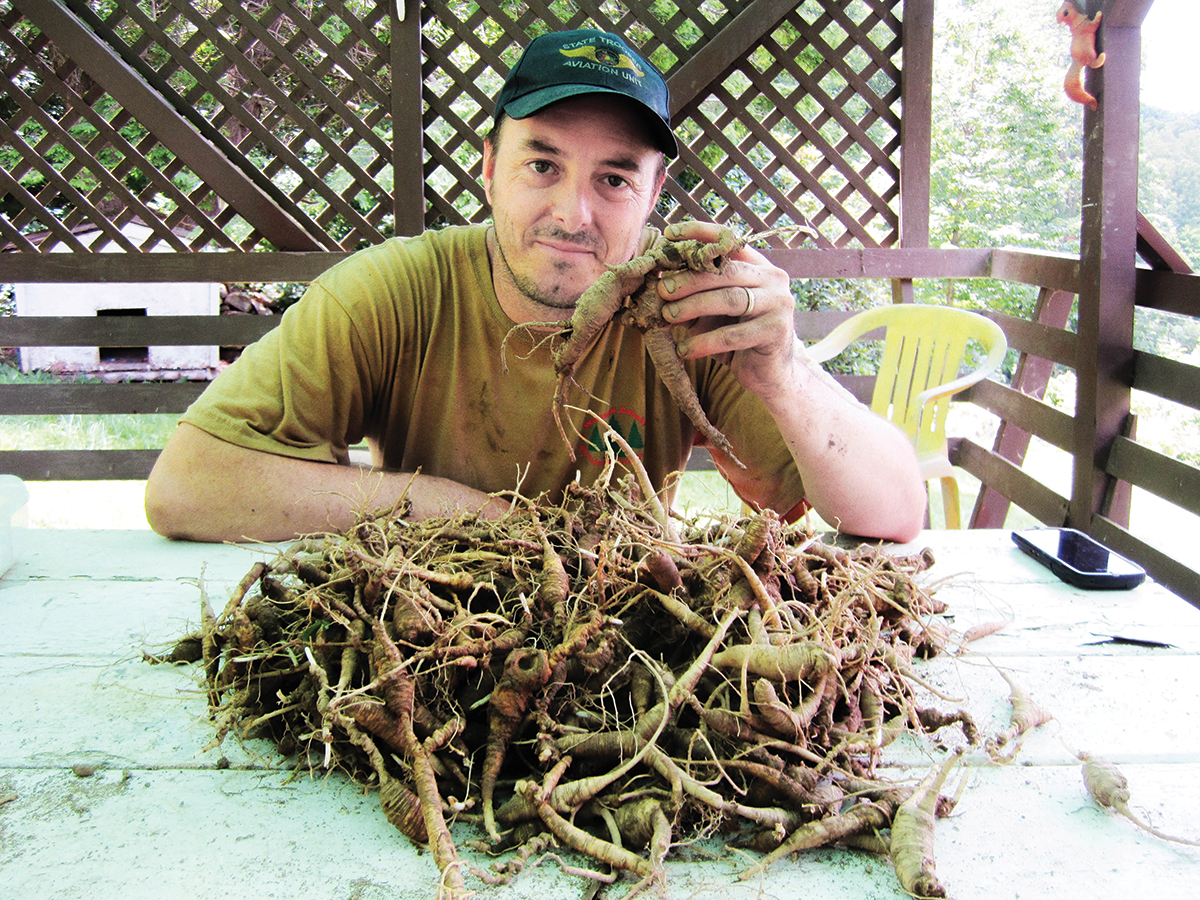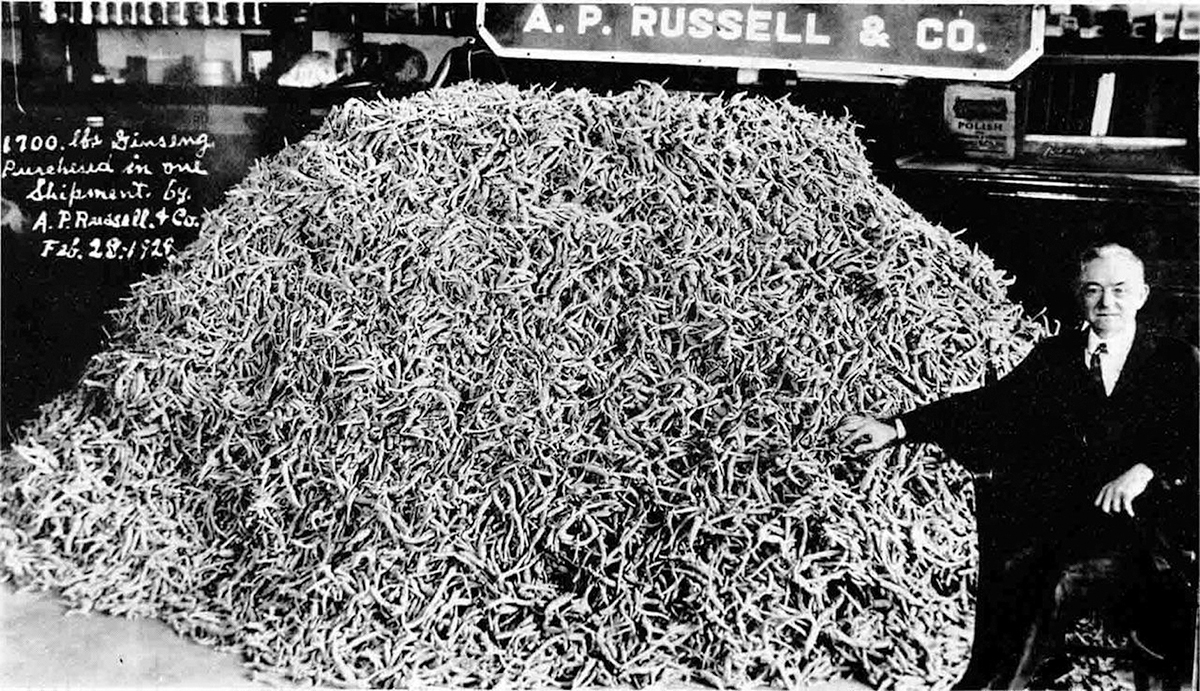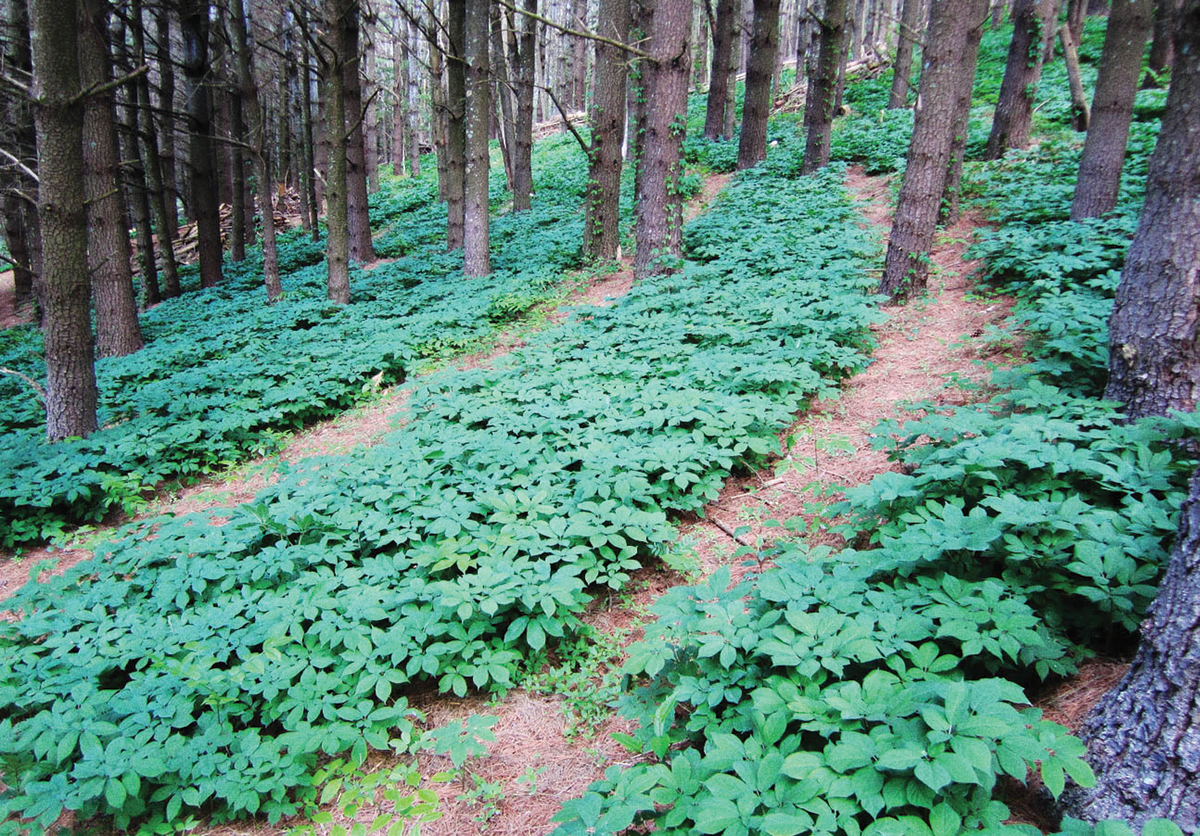Appalachian wild ginseng is wildly profitable

Forestry professor Jim Hamilton says wild ginseng (collected for centuries, as proven in antique black-and-white photo) is like fine wine.
For generations, American ginseng (shortened to “sang” in mountain vernacular) has provided folk medicine and a unique revenue stream to the people of Appalachia. Even today, mature roots of the native plant fetch astonishingly high prices. The greatest demand comes from China, where ginseng, reputed to boost virility and brain function, has been used medicinally for thousands of years. Ginseng is also exchanged as a gift at weddings, during Chinese New Year, and between business associates.
Large, desirable roots sometimes sell for tens of thousands of dollars each. Very old and rare specimens have traded in China for half a million bucks.

Saro Lynch-Thomason, events coordinator for the Swannanoa Valley Museum & History Center, points out that “Appalachia has often been portrayed as an isolated region. But locals have participated in the global ginseng trade since the 19th century.” Last year, National Geographic published an article about the 21st-century trade, saying that cultivating Appalachian ginseng is “like growing money.” The article compared the black market for poached ginseng to the Wild West — whereas episodes of Vice likened it to the Gold Rush or the illegal drug trade.
Western North Carolina’s hardwood-shaded coves, elevation, and moist climate are ideal for ginseng, which thrives on well-drained slopes. Due to over-harvesting and destruction of habitat, however, local ginseng is now a species at risk. But “the divine root” can be legally harvested, used, or sold by those who adhere to stringent state and federal regulations. There are “sang hunters” and cultivators who’ve reported earnings of $80,000 or more per year.

In June, the Swannanoa Valley Museum & History Center will host an online class about the storied, important role ginseng plays in local culture. Presenter Jim Hamilton holds a PhD in Forestry from NC State, is an adjunct professor at Appalachian State University, and is director of the Watauga County Agricultural Extension Office. He is an expert on Panax quinquefolius, even publishing a coming-of-age novel, The Last Entry, set against the backdrop of the ginseng trade.
“Wild ginseng is like fine wine,” says Hamilton. “The ginseng grown commercially for mass consumption, that’s used in energy drinks and pills sold at Citgo stations, is the cheap box wine of the ginseng world.”
Between illegal wildcrafting and Big Ag control there’s “wild-simulated” ginseng, cultivated in tracts of forest land “that mimic the organic conditions of the wilderness,” explains Hamilton. Wild-simulated ginseng roots can mirror the higher prices of truly wild ginseng, and Hamilton teaches workshops about how to cultivate it, for its economic benefits and to promote responsible environmental stewardship.

“Forest land used to be a kind of bank for people who could harvest timber to send their kids to college,” he notes. But clear cutting one’s acres no longer makes economic or environmental sense.
Valuable medicinal herbs are different. Some folks might want to plant a patch of ginseng for novelty. But more serious growers, says Hamilton, “can add value to underutilized forest land for diversified production.”
The Swannanoa Valley Museum & History Center presents an online workshop, “Appalachian Experience: Roots in Appalachia — Ginseng in Western North Carolina” with Jim Hamilton on Monday, June 14, 6:30-7:45 pm. For more information, visit history.swannanoavalleymuseum.org/event/ginseng.
